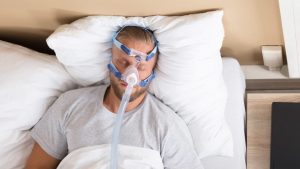A recent study conducted by the Agency for Healthcare Research and Quality (AHRQ) examined the effectiveness of continuous positive airway pressure (CPAP) therapy and concluded that the method may not be as beneficial for long-term treatment of obstructive sleep apnea (OSA) as previously thought.
AHRQ’s Evidence-based Practice Center examined data from 47 clinical trials including 12 randomized controlled trials and 13 nonrandomized comparative studies. The data reviewers found that the non-sleep-related long-term effects of OSA showed no improvement with time, meaning there is a maintained risk of depression, diabetes, stroke, and heart attack for patients, even with consistent treatment.
The report brought to light the weaknesses of available studies and research gaps which failed to show any viable long-term treatment benefits, stating that the current repertoire of data "mostly does not support that CPAP prescription affects long-term, clinically important outcomes." Investigators did note, however, the inconsistencies in measurement units, response to treatment, and the use of the Apnea-Hypopnea Index, which the report deemed as ineffective.
Considering that more than half of all Medicare recipients are at risk for or diagnosed with OSA, CPAP accounts for hundreds of millions of dollars in Medicaid spending alone. With this many machines on the market, the doubt being cast on the machine’s effectiveness leaves room for some worry.
"The big fear that I have, and many of my colleagues have, is that the way this report is worded could easily be misinterpreted as saying that prescribing CPAP doesn't improve these (long-term) outcomes, so we shouldn't be paying for it," said David Rapoport, MD, the director of a sleep medicine research program at the Icahn School of Medicine in NYC. He further stated that even with this report study, CPAP machines are still the most effective method of eliminating direct sleep apnea symptoms such as daytime sleepiness and snoring.
Other technology for OSA treatment includes Oral Pressure Therapy, which uses a vacuum to suction the soft palette and widen airways, and a new therapy called Continuous Negative External Pressure which involves applying a sucking pressure to the neck to widen the trachea. Though these have proven to be effective, they do not have the recognition and rate of prescription of CPAP machines, though in time they may improve in popularity.
As it stands, the AHRQ’s main suggestion is to conduct more studies on CPAP machines so that there may be more conclusive evidence to work with in the future. Time will tell whether or not CPAP will be dethroned from the gold standard of OSA care.























